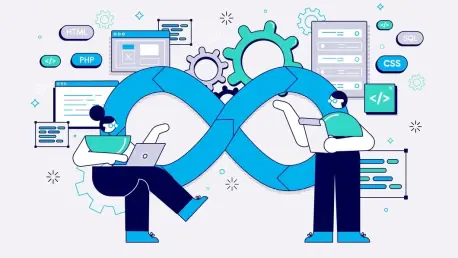The Current Landscape of Software Development
In today’s digital-first world, the software development industry stands as a cornerstone of global innovation, evolving at an unprecedented pace to meet the demands of an increasingly connected society. With technology permeating every aspect of life, from personal communication to complex industrial operations, the sector has become indispensable. Businesses across healthcare, retail, finance, and beyond rely on software solutions to streamline processes, enhance customer experiences, and maintain competitive edges. Major players such as AWS, Microsoft, and Google dominate the landscape, driving advancements through vast cloud infrastructures and cutting-edge tools that empower developers worldwide.
The scope of this industry extends far beyond traditional tech hubs, influencing sectors as diverse as agriculture with precision farming tools and education through e-learning platforms. Economic factors, including the push for cost-effective solutions amid fluctuating markets, shape investment in software. Additionally, the growing appetite for innovative, user-friendly applications fuels a relentless cycle of development. Emerging technologies like artificial intelligence and blockchain are no longer niche but are becoming integral to mainstream adoption, setting the stage for transformative shifts in how software is conceived and deployed.
A notable driver of this evolution is the heightened expectation for seamless digital interactions, pushing companies to prioritize agility and adaptability. The convergence of economic pressures and technological breakthroughs has created fertile ground for innovation, yet it also presents challenges in keeping pace with rapid change. As the industry navigates this dynamic environment, understanding the forces at play provides critical insight into the trends defining the current year and beyond.
Key Software Development Trends Shaping 2025
Emerging Technologies and Innovations
Artificial Intelligence (AI) and Machine Learning (ML) have cemented their roles as pivotal forces in software development, transforming industries with capabilities like predictive analytics and automated decision-making. These technologies enable applications ranging from personalized healthcare solutions to fraud detection in finance, demonstrating their versatility. Platforms such as TensorFlow support developers in building sophisticated neural networks, ensuring accessibility across various programming environments and hardware.
The Internet of Things (IoT) continues to expand its footprint, bolstered by 5G networks and enhanced security protocols. From connected vehicles to smart industrial systems, IoT facilitates real-time data processing, improving efficiency in critical operations. Meanwhile, blockchain technology extends beyond cryptocurrencies, supporting decentralized frameworks like Web 3.0 and Decentralized Finance (DeFi), which prioritize transparency and user control over digital assets.
Edge computing emerges as a game-changer, particularly for IoT ecosystems, by processing data closer to its source, thus reducing latency and reliance on centralized clouds. This technology meets the rising consumer demand for secure, personalized, and instantaneous digital experiences. As expectations evolve, developers are compelled to integrate these innovations, ensuring solutions are not only cutting-edge but also responsive to user needs.
Market Insights and Growth Projections
Statistical projections underscore the momentum behind these technological advancements, with the AI market valued at $243.72 billion in the current year and anticipated to grow significantly in the coming years. Edge computing, too, shows remarkable potential, with market size expected to expand to $139.58 billion by 2030, driven by integration with AI and 5G technologies. Such figures highlight the scale of investment and interest in these areas.
Adoption rates for Low-Code/No-Code (LCNC) platforms are equally impressive, with a market forecast of $46.4 billion by 2026, reflecting a shift toward democratized development. These platforms enable faster application creation, often doubling the speed compared to traditional methods, which is reshaping how businesses approach software projects. This trend signals a broader move toward efficiency and inclusivity in tech development.
Looking ahead, these trends are poised to redefine business strategies, pushing organizations to prioritize scalability and rapid deployment. The focus on innovative tools will likely accelerate technological advancements, enabling companies to stay agile in competitive markets. As adoption grows, the impact on operational models and customer engagement strategies becomes increasingly profound, setting a new benchmark for industry standards.
Challenges Facing Software Development in 2025
The software development sector grapples with significant hurdles, chief among them being the escalating threat of cybersecurity breaches, with cybercrime costs projected to reach $10 trillion this year. As digital ecosystems expand, so does the attack surface, particularly with the proliferation of remote work and IoT devices. Protecting sensitive data against sophisticated threats remains a pressing concern for developers and businesses alike.
Technological challenges also loom large, with scalability issues in LCNC platforms posing limitations for complex projects despite their accessibility. Integration complexities in cloud-native environments further complicate development, often requiring substantial resources to ensure seamless functionality. Addressing these technical barriers demands innovative approaches and robust infrastructure to support the growing intricacy of software systems.
Workforce dynamics present additional obstacles, as remote and distributed teams face coordination difficulties due to time zone disparities and cultural differences. Solutions such as asynchronous communication and advanced collaboration tools offer pathways to mitigate these issues, fostering productivity in virtual settings. Overcoming these challenges is essential to maintaining the momentum of innovation and ensuring that development processes remain efficient and cohesive.
Regulatory and Security Considerations
Navigating the regulatory landscape is a critical aspect of software development, with compliance to laws like GDPR and HIPAA shaping how solutions are designed and implemented. These regulations mandate stringent data protection measures, influencing everything from user consent protocols to storage practices. Adhering to such standards is non-negotiable for companies operating across global markets, particularly in sensitive sectors like healthcare and finance.
Cybersecurity frameworks such as zero-trust architecture and DevSecOps have gained prominence as essential strategies for safeguarding digital assets. Zero-trust models operate on the principle of verifying every access request, while DevSecOps integrates security into each phase of the development lifecycle, reducing vulnerabilities. Tools automating vulnerability scanning further support compliance, ensuring that software meets rigorous safety benchmarks.
The interplay between regulatory changes and security demands significantly impacts development practices, often dictating the adoption of specific technologies. As threats evolve, the emphasis on robust defenses shapes how applications are built, with a clear trend toward embedding security from the ground up. This convergence of regulation and protection continues to redefine priorities, compelling the industry to balance innovation with accountability.
Future Directions for Software Development
Looking toward the horizon, the dominance of AI and ML is set to intensify, permeating deeper into automation and analytics across diverse applications. Decentralized systems like Web 3.0 are expected to redefine digital interactions, emphasizing user ownership and privacy through blockchain-based frameworks. These advancements signal a shift toward more autonomous and user-centric technology landscapes.
Potential disruptors such as quantum computing and further advancements in 5G hold the promise of revolutionizing software capabilities, from unprecedented processing speeds to ultra-low latency networks. Quantum computing, in particular, could unlock new paradigms in encryption and simulation, while 5G will enhance real-time applications in sectors like autonomous vehicles. Keeping pace with these emerging forces will be crucial for developers aiming to stay at the forefront of innovation.
Sustainability also emerges as a guiding principle, with efforts to reduce energy consumption through localized data processing gaining traction. User-centric design remains a priority, ensuring that technology aligns with human needs, while global economic conditions will continue to influence investment and growth patterns. These factors collectively point to an industry poised for dynamic evolution, balancing technological progress with broader societal impacts.
Conclusion: Navigating the Future of Software Development
Reflecting on the insights gathered, it becomes evident that technologies such as AI, IoT, and edge computing have reshaped the software development arena with transformative potential. The challenges of cybersecurity and integration complexities underscore the need for vigilance and innovation in equal measure. Opportunities abound for those who adapt swiftly, leveraging trends like LCNC platforms to democratize development.
Moving forward, businesses and developers are encouraged to prioritize investments in robust cybersecurity measures, ensuring protection against escalating threats. Embracing agile methodologies proves vital for maintaining flexibility in a fast-evolving landscape. Exploring partnerships with cloud providers could further enhance scalability, offering a strategic edge.
Ultimately, the path ahead demands a proactive stance, with a focus on continuous learning to harness emerging tools like quantum computing. By fostering a culture of adaptability and sustainability, the industry positions itself to not only meet current demands but also anticipate future shifts, driving progress in uncharted territories.









